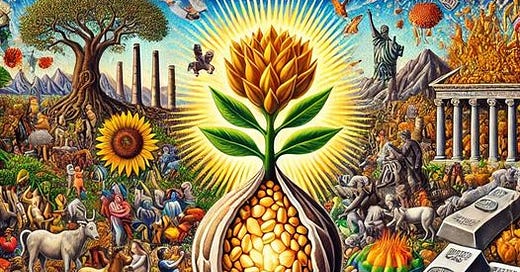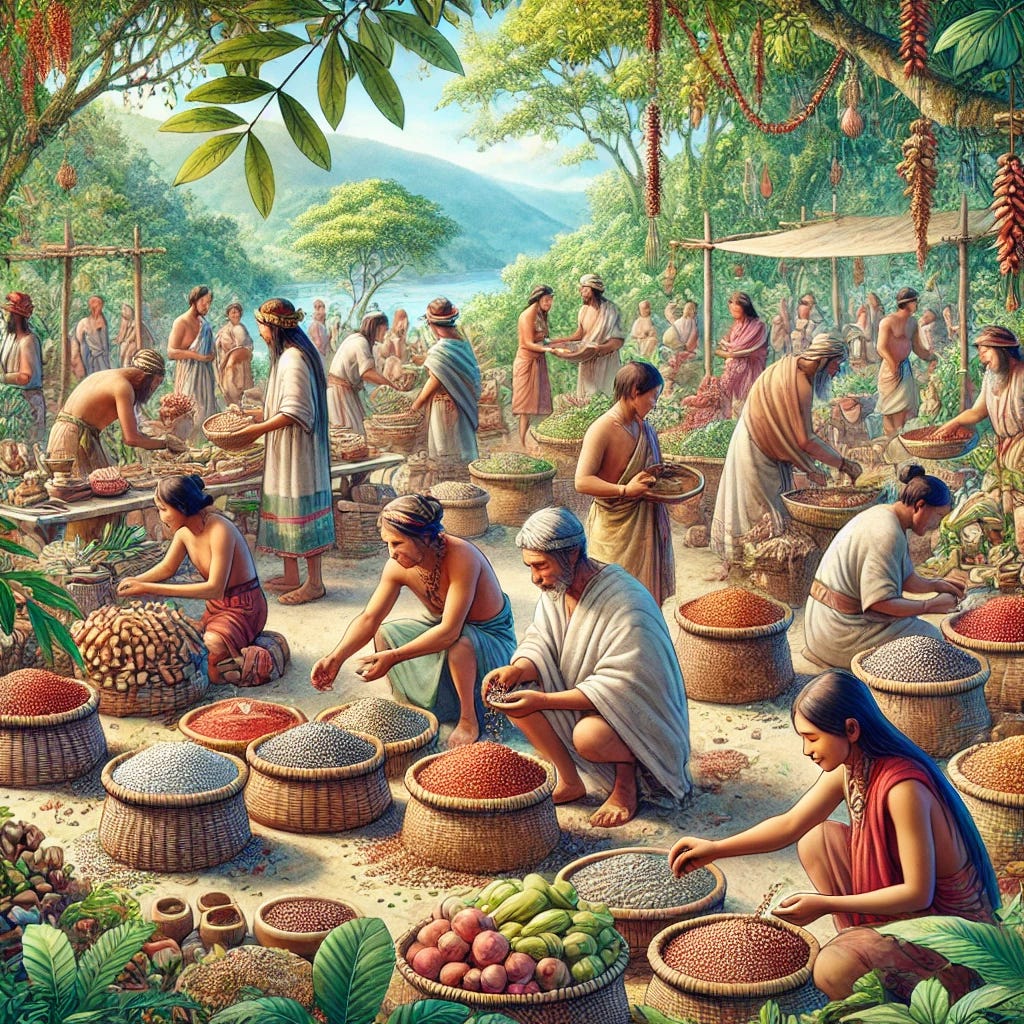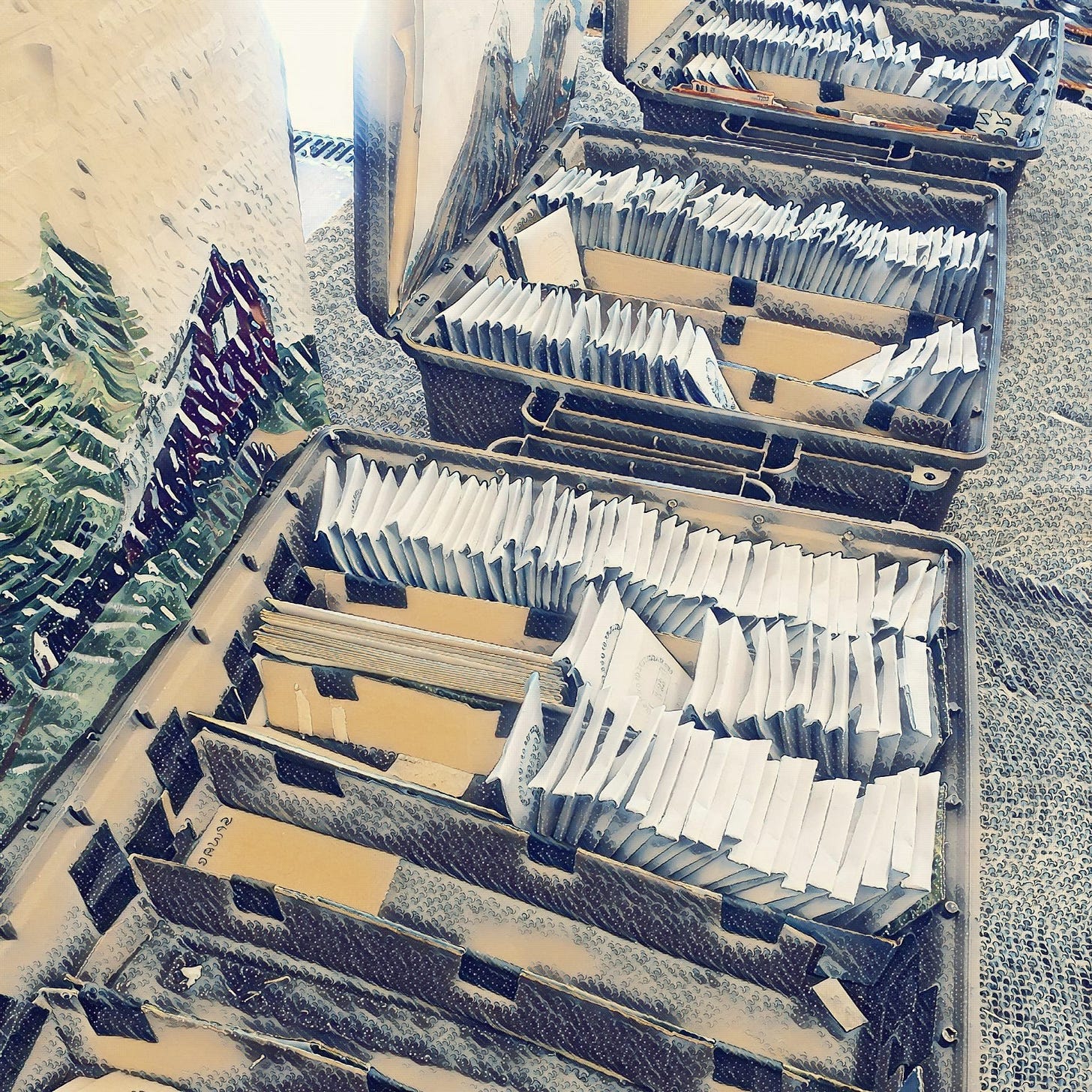Seeds, are life-supporting entities and are capable of exponential growth and reproduction. Yet, we live in a society that often equates scarcity with value, making it challenging to reconcile the true worth of something as abundant as seeds.
Let’s break this down.
1. Abundance vs. Scarcity Paradigm:
In traditional economics, scarcity is often a key driver of value. The rarer an item, the more it is perceived to be worth (a Picasso for instance). This idea, deeply rooted in the scarcity paradigm, permeates most market-based systems. When we shift to seeds, which can reproduce abundantly in the right conditions, it challenges this notion. If seeds are abundant, shouldn't they be considered less valuable by traditional economic metrics?
However, seeds operate under a different paradigm—one rooted in abundance rather than scarcity. The value of seeds isn’t necessarily tied to their scarcity but to their potential:
- Potential for Life: A single seed contains the genetic information to grow an entire plant, which in turn can produce hundreds or even thousands of seeds. The potential for regeneration and the perpetuation of life is immense. Indeed we have tracked seed-saving very carefully for the past 5-6 years. An example; in 2018 we were given a 32ozs Mason Jar filled with dried Fava Beans (pretty much all dried beans are potentially seeds, incidentally). By planting and saving them that 32ozs turned into 8 gallons by 2021. Seeds are much more valuable than other valuables, in fact all living entities in this image rely on seeds or spores to survive, including the plants and trees.
- Ecosystem Resilience: Seeds are not just individual units of reproduction; they play a vital role in maintaining biodiversity and ecosystem resilience. Their value extends beyond the individual and contributes to the health of the entire system.
2. Ecological Value of Seeds:
- Life Sustaining: Seeds are the foundation of life. They not only provide the means to grow food, but they also maintain ecosystems, support wildlife, and contribute to the carbon cycle. Many plants also consume carbon-dioxide and react with bacteria in soils via Quorum Sensing, to constantly improve soils.
- Diversity and Adaptation: Our practice of growing landrace seeds and using quorum sensing techniques enhances the seeds’ adaptability and resilience. These seeds carry value not just in quantity, but in their genetic diversity and adaptation to local conditions, which are critical in the face of climate change.
- Cultural and Ancestral Value: Seeds also carry a deep cultural value. Many seeds are heirlooms, passed down through generations, and hold stories, traditions, and knowledge. The value of a seed in this context transcends its immediate economic worth. There were societies over millennia which used seeds as a currency, perhaps we should reconsider this.
3. Reframing Seed Value:
To think about the true value of seeds, it may be helpful to reframe the concept of value from purely economic terms to a more holistic understanding:
- Intrinsic Value: Seeds have inherent value simply because they sustain life. Whether or not they are rare, they are precious because they are the foundation of food security, biodiversity, and ecological health.
- Relational Value: Seeds also have value in relation to the ecosystems and communities they support. The abundance of seeds contributes to the abundance of life. The more seeds there are, the more resilient ecosystems become, and this leads to stronger connections between people, plants, and the earth.
- Potential Value: The true value of seeds might best be understood in terms of their potential rather than their current state. One seed has the potential to generate a whole cycle of life, which could in turn produce more seeds. Each seed, then, holds within it the promise of future growth, sustenance, and regeneration. Here were we are located, in the Pacific Northwest USA we have the imminent danger of the Cascadia Subduction Earthquake. So we drew up a plan for localized Emergency Seed Banks. To supplement our permanent seed exchanges throughout our Bioregion.
4. The Economics of Abundance:
How do we price or value something that naturally increases in abundance?
- Perceived Rarity: In the modern seed industry, certain seeds are priced higher because they are rare, patented, or hybridized, creating artificial scarcity. In contrast, our seeds, which are resilient and abundant, carry a different kind of value. They are not just commodities but are living investments in future abundance and ecosystem health.
- Exchange Beyond Money: You might consider value systems that go beyond monetary exchange, such as gift economies, bartering, or community seed sharing. In these systems, seeds are valued for their ability to create abundance, share knowledge, and foster connections, rather than for their scarcity or price.
- Community-Supported Agriculture (CSA) Models: In CSAs, for example, the community invests in abundance ahead of time, recognizing the cyclical nature of growth and harvest. Seeds, in this model, are a kind of "pre-abundance" that the community is willing to invest in because of their future yield and contribution to local food security.
5. Practical Implications for Our Project:
Given our seed-saving practices and the unique resilience of our seeds, we are focused on their long-term value rather than pricing them based on traditional scarcity models:
- Story-Based Value: Each seed’s value is tied to its story—how it was grown, its unique properties, and its place within a larger ecological narrative. The value lies not just in the seed itself but in the context we provide through our storybook catalog. This will be unique being both information based with entertaining interludes.
- Subscription and Sustainability: Our subscription model, where subscribers receive seeds regularly, acknowledges this idea of abundance and regenerative cycles. People are investing not just in seeds, but in the knowledge, stories, and future harvests these seeds will create.
Conclusion: A Paradigm Shift
Seeds teach us that abundance and value are not contradictory. They challenge us to move beyond scarcity thinking and embrace a regenerative mindset. Their true value lies in their ability to support life, perpetuate ecosystems, and connect people to the earth and each other.
In reframing the value of seeds, we recognize that their worth is not solely tied to immediate economic returns but to their potential to generate life and sustain communities—both human and ecological—over time.








